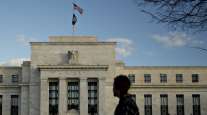Fed Keeps Key Interest Rate Unchanged

[Stay on top of transportation news: Get TTNews in your inbox.]
WASHINGTON — The Federal Reserve kept its key interest rate unchanged June 14 after having raised it 10 straight times to combat high inflation. But in a surprise move, the Fed signaled that it may raise rates twice more this year, beginning as soon as next month.
The Fed’s move to leave its benchmark rate at about 5.1%, its highest level in 16 years, suggests that it believes the much higher borrowing rates it’s engineered have made some progress in taming inflation. But top Fed officials want to take time to more fully assess how their rate hikes have affected inflation and the economy.
“Holding the target rate steady at this meeting allows the committee to assess additional information and its implications” for the Fed’s policies, the central bank said in a statement.
The central bank’s 18 policymakers envision raising its key rate by an additional half-point this year, to about 5.6%, according to economic forecasts they issued June 14.
“We understand the hardship that high inflation is causing, and we remain strongly committed to bring inflation back down to our 2% goal," Fed Chair Jerome Powell said at a news conference. "The process of getting inflation down is going to be a gradual one — it’s going to take some time.”
The economic projections revealed a more hawkish Fed than many analysts had expected. Twelve of the 18 policymakers forecast at least two more quarter-point increases in the Fed’s rate. Four supported a quarter-point increase. Only two officials envisioned keeping rates unchanged.
At his news conference, Powell made clear that the Fed still regards the still-robust job market and the wage growth that has accompanied it as contributing to high inflation. At the same time, he expressed optimism that lower apartment rental costs, among other items, may help slow inflation in the coming months. He stressed that the Fed wants to see an inflation slowdown actually materialize before holding off on further rate hikes.
“We want to see inflation coming down decisively,” he said.
Immediately after the Fed's announcement, which followed its latest policy meeting, stocks sank and Treasury yields surged. The yield on the two-year Treasury note, which tends to track market expectations for future Fed actions, jumped from 4.62% to 4.77%.
The Fed’s aggressive streak of rate hikes, which have made mortgages, auto loans, credit cards and business borrowing costlier, have been intended to slow spending and defeat the worst bout of inflation in four decades. Mortgage rates have surged, and average credit card rates have surpassed 20% to a record high.
The central bank’s rate hikes have coincided with a steady drop in consumer inflation, from a peak of 9.1% last June to 4% as of May. But excluding volatile food and energy costs, so-called core inflation remains chronically high. Core inflation was 5.3% in May compared with 12 months earlier, well above the Fed’s 2% target.
Want more news? Listen to today's daily briefing below or go here for more info:




